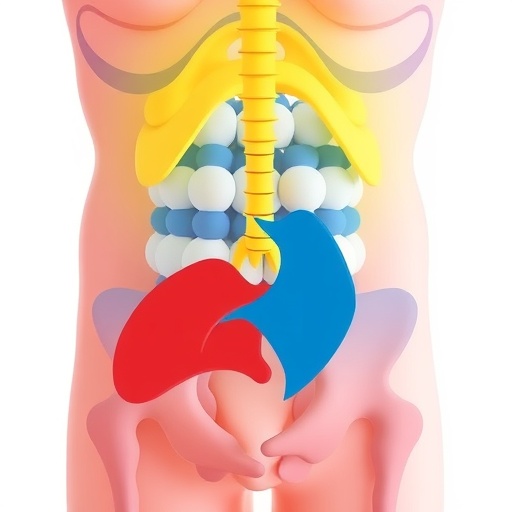In the heart of Southwestern Uganda, a profound healthcare challenge is unfolding, one that illuminates the broader struggles faced by families battling congenital conditions in low-resource settings. Recent research has spotlighted the staggering economic burden borne by families caring for children with anorectal malformations (ARMs), a group of rare congenital defects that severely affect the quality of life and require complex and ongoing medical interventions. This investigation delves into the multifaceted risk factors contributing to catastrophic healthcare expenditures among these vulnerable households, revealing insights that ripple far beyond the immediate clinical environment.
The study underscores that healthcare costs for children born with ARMs do not act in isolation; rather, they interlink with socio-economic variables, geographical barriers, and systemic healthcare inadequacies. The financial ramifications extend well beyond the direct costs of surgery and medical care, encompassing transportation, accommodation near distant health centers, and subsistence expenses during prolonged treatment periods. For many families in Southwestern Uganda, the costs translate into devastating economic consequences, often plunging them into cycles of debt and poverty.
One of the key revelations is the degree to which healthcare expenditures push families beyond their financial means, a phenomenon termed catastrophic healthcare expenditure. This occurs when medical expenses exceed a critical threshold of household income, forcing the sale of assets, reduced consumption of essentials, and compromised education opportunities for siblings. In the context of ARMs, where repeat surgeries and long-term follow-up are common, the risk of such economic hardship multiplies exponentially.
The burden is disproportionately higher among families living in rural or remote communities. Distance to specialized healthcare facilities significantly inflates indirect costs. Patients often have to travel hundreds of kilometers over challenging terrain to access pediatric surgical services, exacerbating the financial strain through lost wages and additional logistics expenditures. The infrastructure deficits in these areas compound the problem, with limited local medical expertise necessitating referral to urban centers.
Moreover, the clinical complexity of ARMs introduces further financial vulnerability. The heterogeneity of malformations demands individualized care pathways, involving multidisciplinary teams and sometimes multiple, staged surgical procedures. Postoperative care and management of complications require consistent monitoring, often unattainable in resource-limited environments, leading to increased morbidity and, by extension, higher economic burdens due to repeated hospitalizations.
The research also highlights gaps in insurance coverage and social safety nets. In Uganda, the majority of healthcare financing relies on out-of-pocket payments, with minimal governmental subsidy or insurance penetration. This absence of financial risk protection leaves families exposed to the full brunt of medical costs. Efforts to develop universal health coverage are ongoing but face numerous implementation hurdles, particularly in rural zones where health service delivery remains uneven.
Psychosocial impacts intertwine with economic stressors, creating an overarching environment of hardship. Families confront stigma and social isolation stemming from the visible nature of anorectal anomalies and associated disabilities. These factors indirectly influence healthcare-seeking behaviors and adherence to treatment plans, further complicating clinical outcomes and potentially increasing long-term costs.
Community education and awareness form another critical axis in tackling the economic burden. Misconceptions about congenital malformations can delay diagnosis and intervention, inadvertently escalating treatment complexity and cost. The study advocates for targeted health promotion campaigns to improve early recognition and referral, which could mitigate some financial pressures by facilitating timely and less complicated medical care.
A noteworthy observation pertains to gender disparities. Mothers often bear the primary caregiving responsibility, juggling healthcare management with economic activities under precarious conditions. This disproportionate burden amplifies gender inequities and diminishes women’s economic empowerment, underscoring the need for gender-responsive policies within healthcare frameworks.
Technological and infrastructural advancements present potential pathways to alleviate economic burdens. Improving telemedicine capabilities could bridge some geographic gaps, enabling remote consultations and follow-up, thus reducing travel-related expenses. However, sustaining such innovations demands robust investment and capacity building within the health system—a goal complicated by competing priorities and resource constraints.
Policy implications emerging from the study are profound and call for multi-sectoral interventions. Strengthening health financing mechanisms to shield households from catastrophic expenditures through subsidized care or insurance schemes represents a vital step. Concurrently, investments in decentralized pediatric surgical services and training of specialized health workers would enhance accessibility and reduce indirect costs.
The findings also suggest that international partnerships and donor engagement should consider the broader socioeconomic impacts of congenital anomalies, integrating support that extends beyond health facilities to encompass social support services. A holistic approach addressing both medical and socio-economic dimensions could foster resilience and improve life trajectories for affected children and their families.
Data gleaned from this research form a critical evidence base for advocacy and strategic planning within Uganda and similar low- and middle-income countries grappling with congenital malformations under financial duress. It amplifies the voices of marginalized populations who navigate the dual challenges of health-related suffering and economic marginalization, spotlighting urgent equity gaps in global health.
By illuminating the pathways through which ARMs precipitate catastrophic healthcare expenditure, this work invites a re-examination of healthcare delivery models, urging a shift towards integrated, equitable, and sustainable systems. As the global health community advances towards universal health coverage and the Sustainable Development Goals, addressing the financial vulnerabilities exposed by conditions such as ARMs must remain at the forefront of policy agendas.
Ultimately, this comprehensive exploration into the economic hardship associated with anorectal malformations in Southwestern Uganda is a clarion call to action. It challenges stakeholders to innovate, collaborate, and prioritize vulnerable groups within health policy discourse, aiming not merely to treat congenital anomalies but to dismantle the economic barriers that compound their impact.
Subject of Research: Risk factors influencing catastrophic healthcare expenditure and economic burdens borne by families of children with anorectal malformations in a low-resource setting.
Article Title: Risk factors for catastrophic healthcare expenditure and high economic burden for children with anorectal malformations in Southwestern Uganda.
Article References:
Oyania, F., Stephens, C.Q., Ullrich, S. et al. Risk factors for catastrophic healthcare expenditure and high economic burden for children with anorectal malformations in Southwestern Uganda. Int J Equity Health 24, 321 (2025). https://doi.org/10.1186/s12939-025-02681-2
Image Credits: AI Generated
DOI: https://doi.org/10.1186/s12939-025-02681-2




